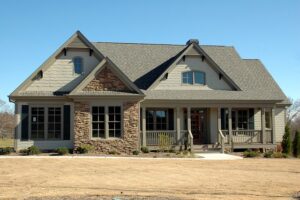Loans for Elder Care: Understanding Your Options

Introduction
The world’s population is aging, making elder care facilities more needed. Families look for reliable care for their loved ones. Elder care providers need funding to build or expand their facilities. It’s important to know the loan options and financial strategies available.
This guide will explain the different loans and strategies for financing elder care facilities.
Understanding the Demand for Elder Care Facilities
More people are living longer thanks to better healthcare and living conditions. This means families need elder care options like assisted living and nursing homes. The demand for these services offers opportunities for providers to grow.
Elder care facilities are key in the community. They provide essential services for seniors to live with dignity. However, getting the funding needed requires careful planning.
Types of Loans for Elder Care Facilities
There are various loan options for funding elder care facilities. Each loan has its own benefits and requirements. Knowing these can help you choose the best option for your needs.
Traditional Bank Loans
Traditional bank loans are a common choice for funding elder care facilities. They offer competitive interest rates and flexible repayment terms. But, you’ll need a strong credit history and collateral. A detailed business plan showing the facility’s profitability is also required.
To apply for a bank loan, you’ll need to gather documents like financial statements and a business plan. Understanding your facility’s finances will help in the application process.
Small Business Administration (SBA) Loans
The SBA offers several loan programs for elder care facilities. The SBA 7(a) loan program provides up to five million dollars for various needs. It’s designed to help small businesses grow.
The SBA 504 loan program is for buying or improving real estate and major equipment. These loans are partially guaranteed by the SBA, making them easier to qualify for.
SBA loans have specific eligibility requirements. You must show you can repay the loan and meet the necessary standards.
USDA Rural Development Loans
For facilities in rural areas, the U.S. Department of Agriculture offers Rural Development Loans. These loans support the development of essential facilities like elder care homes. They offer low-interest rates and long repayment terms.
To qualify for USDA loans, you must meet income requirements. The funds can be used for various purposes, including construction and equipment purchase.
Financing Strategies for Elder Care Facilities
There are financing strategies beyond traditional loans for elder care providers. These strategies can expand your funding options and provide additional capital.
Leveraging Equity
Existing facilities can use their equity to secure financing. This involves using the facility’s assets as collateral for a loan. It provides funding without selling ownership stakes or changing operational control.
For example, if your facility has real estate assets, you can use them as collateral for a loan. This can fund expansions or upgrades.
Private Investors and Venture Capital
Attracting private investors or venture capital can be a good strategy. It’s especially true for innovative or growing services. Investors provide capital for a share of the profits. However, it means sharing ownership and decision-making.
When seeking private investment, a clear business plan is essential. Investors want to see how their funds will be used and the expected return on investment.
Grants and Subsidies
There are many grants and subsidies for elder care facilities. These funds can help with building, modernizing, and expanding services. Applying for these grants can get you the money you need without having to pay it back.
Grants can be tough to get and take a lot of time. Make sure you read all the rules and requirements for each grant carefully.
Key Considerations for Securing Financing
When looking for money for elder care facilities, there are important things to think about. Knowing these can help you find the right financing.
Regulatory Compliance
Elder care places have to follow many rules and standards. When you’re looking for money, think about the costs of meeting these standards. Lenders will check if you’re following all the rules.
Make sure your place has all the licenses it needs. This includes health and safety rules and training for staff. Lenders will want to know you’re following all the rules.
Market Demand and Demographics
It’s important to know the demand for elder care in your area. A good market analysis can show you how well your place will do. Look at the local aging population, income levels, and other elder care options.
Understanding your target market helps you offer the right services. Lenders will like a well-done market analysis in your loan application.
Financial Projections
Having detailed financial plans is key for loans and investments. Include expected income, expenses, and profits for several years. This shows lenders your facility’s financial health.
Realistic and accurate projections build trust. Lenders want to see a clear plan for making money and growing.
Building a Strong Relationship with Lenders
Having a good relationship with lenders is helpful. Keep them updated on your progress and any challenges. This builds trust and confidence.
If you’re having trouble meeting your financial obligations, talk to your lender. They might have solutions or options to help you.
Conclusion
Getting money for elder care facilities takes understanding the loan options and financial strategies. Look at bank loans, SBA loans, USDA Rural Development Loans, private investors, and grants. Each has its own rules and things to consider.
By looking at these factors and making detailed plans, elder care providers can get the funding they need. With the right approach and market understanding, elder care facilities can meet the growing demand. This commitment to quality care makes a big difference in the community.
Elder care facilities are vital for the aging population. With the right funding, providers can grow and expand their services. Careful planning and understanding of financing options are key to success in this field.








